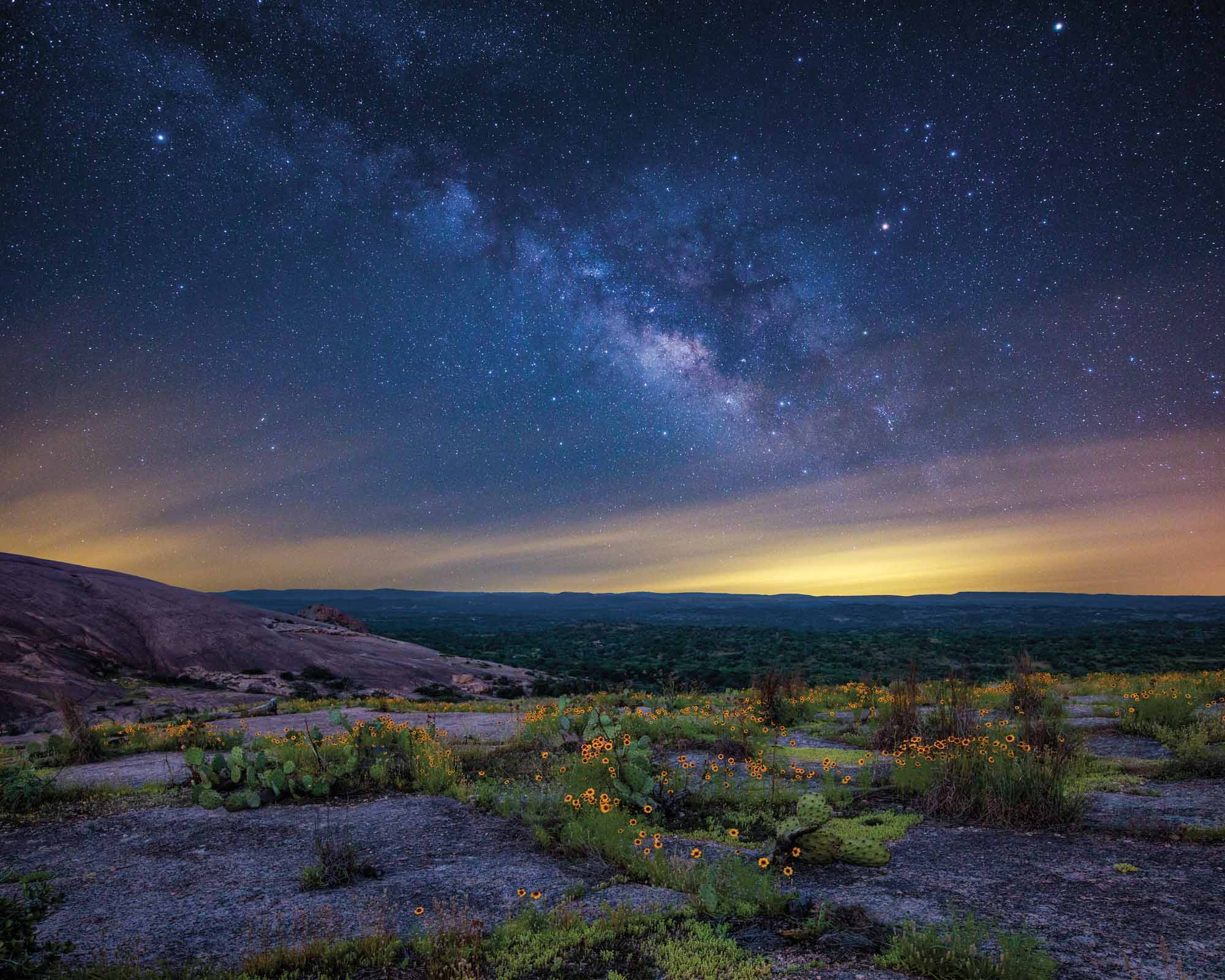
When my family and I moved to the Dripping Springs area three years ago, I remember noticing a few times that we’d left a light on outside—only to realize that the moon really was that bright in the clear sky. After growing up in the suburbs and living in Houston for years, I’d never imagined I’d be able to see the Milky Way from my back patio. It’s one of the best parts of living in a rural area and more than makes up for not being able to get pizza delivered to your house or the spotty Wi-Fi. And though there are times when I wish for a few street lights to illuminate my drive home at night, I appreciate that my young children’s most common bedtime stalling tactic is to ask to go look at the stars.
Looking up at the dazzling night is a welcome moment of calm in our overly busy lives.
The Hill Country night skies really are something to behold. When people come to visit, it’s our favorite thing to show off, even more than the local barbecue and wine trails. Constellations like the Little Dipper, too dim to be seen in the bright lights of the big cities, are easily discernable. Looking up at the dazzling night is a welcome moment of calm in our overly busy lives.
And when we travel beyond our own backyard to more remote destinations in West or South Texas, the sheer number of bright stars can overwhelm and disorient, in a good way. Starry skies are a special part of traveling in Texas that I hope is preserved for my children’s children and beyond. In our cover feature (Page 34), Marfa-based writer Rachel Monroe delves into the campaign to protect this singular Texas resource. Dark-sky initiatives should be important to every Texan who has proudly clapped four times before shouting, “deep in the heart of Texas.”








